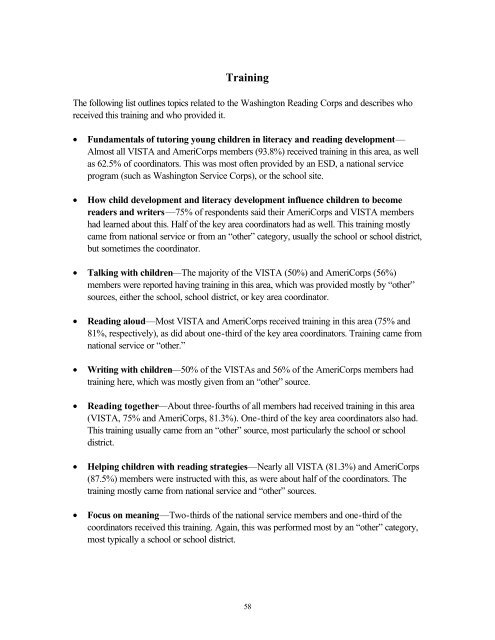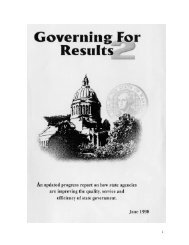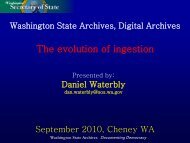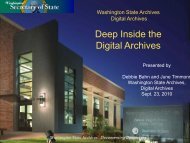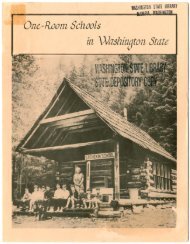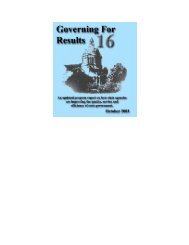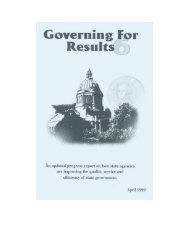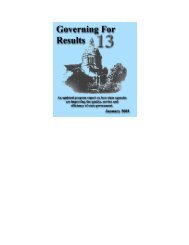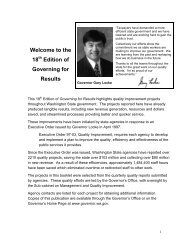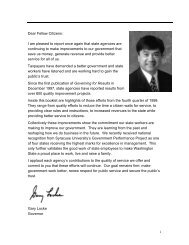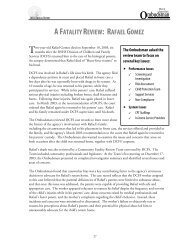Washington Reading Corps: Impacts of National Service and the ...
Washington Reading Corps: Impacts of National Service and the ...
Washington Reading Corps: Impacts of National Service and the ...
- No tags were found...
You also want an ePaper? Increase the reach of your titles
YUMPU automatically turns print PDFs into web optimized ePapers that Google loves.
TrainingThe following list outlines topics related to <strong>the</strong> <strong>Washington</strong> <strong>Reading</strong> <strong>Corps</strong> <strong>and</strong> describes whoreceived this training <strong>and</strong> who provided it.• Fundamentals <strong>of</strong> tutoring young children in literacy <strong>and</strong> reading development—Almost all VISTA <strong>and</strong> Ameri<strong>Corps</strong> members (93.8%) received training in this area, as wellas 62.5% <strong>of</strong> coordinators. This was most <strong>of</strong>ten provided by an ESD, a national serviceprogram (such as <strong>Washington</strong> <strong>Service</strong> <strong>Corps</strong>), or <strong>the</strong> school site.• How child development <strong>and</strong> literacy development influence children to becomereaders <strong>and</strong> writers—75% <strong>of</strong> respondents said <strong>the</strong>ir Ameri<strong>Corps</strong> <strong>and</strong> VISTA membershad learned about this. Half <strong>of</strong> <strong>the</strong> key area coordinators had as well. This training mostlycame from national service or from an “o<strong>the</strong>r” category, usually <strong>the</strong> school or school district,but sometimes <strong>the</strong> coordinator.• Talking with children—The majority <strong>of</strong> <strong>the</strong> VISTA (50%) <strong>and</strong> Ameri<strong>Corps</strong> (56%)members were reported having training in this area, which was provided mostly by “o<strong>the</strong>r”sources, ei<strong>the</strong>r <strong>the</strong> school, school district, or key area coordinator.• <strong>Reading</strong> aloud—Most VISTA <strong>and</strong> Ameri<strong>Corps</strong> received training in this area (75% <strong>and</strong>81%, respectively), as did about one-third <strong>of</strong> <strong>the</strong> key area coordinators. Training came fromnational service or “o<strong>the</strong>r.”• Writing with children—50% <strong>of</strong> <strong>the</strong> VISTAs <strong>and</strong> 56% <strong>of</strong> <strong>the</strong> Ameri<strong>Corps</strong> members hadtraining here, which was mostly given from an “o<strong>the</strong>r” source.• <strong>Reading</strong> toge<strong>the</strong>r—About three-fourths <strong>of</strong> all members had received training in this area(VISTA, 75% <strong>and</strong> Ameri<strong>Corps</strong>, 81.3%). One-third <strong>of</strong> <strong>the</strong> key area coordinators also had.This training usually came from an “o<strong>the</strong>r” source, most particularly <strong>the</strong> school or schooldistrict.• Helping children with reading strategies—Nearly all VISTA (81.3%) <strong>and</strong> Ameri<strong>Corps</strong>(87.5%) members were instructed with this, as were about half <strong>of</strong> <strong>the</strong> coordinators. Thetraining mostly came from national service <strong>and</strong> “o<strong>the</strong>r” sources.• Focus on meaning—Two-thirds <strong>of</strong> <strong>the</strong> national service members <strong>and</strong> one-third <strong>of</strong> <strong>the</strong>coordinators received this training. Again, this was performed most by an “o<strong>the</strong>r” category,most typically a school or school district.58


